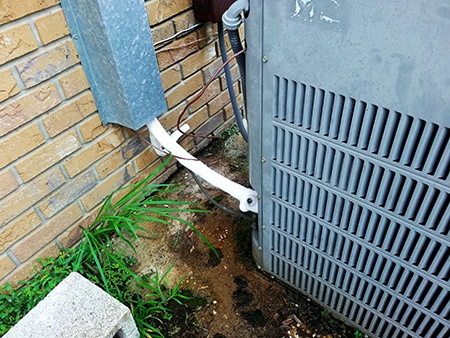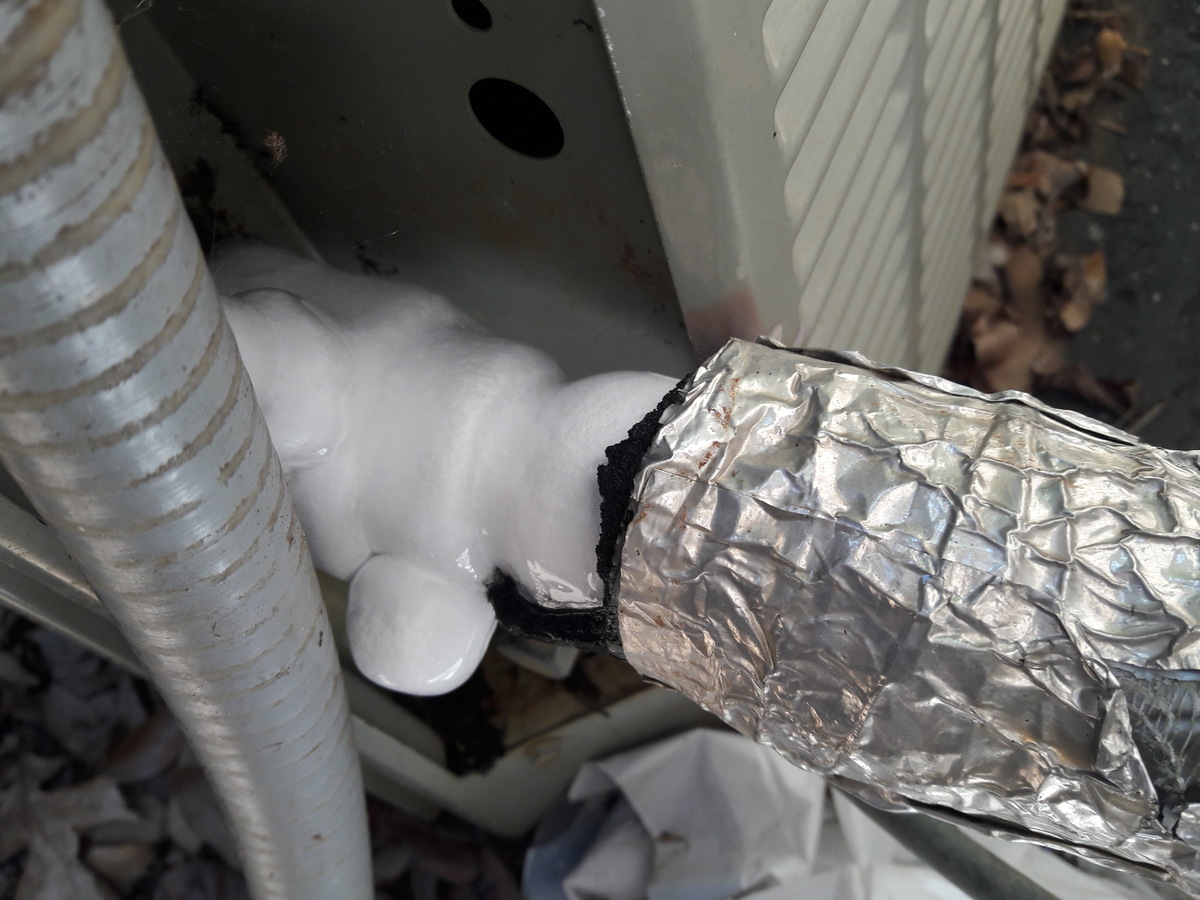Dealing With a Frozen AC Pipe - Advice for Resolving the Issue
Dealing With a Frozen AC Pipe - Advice for Resolving the Issue
Blog Article
We've noticed this great article about What Do I Do If My AC Pipe Is Frozen below on the web and figured it made perfect sense to relate it with you on this page.

Introduction
Uncovering that your AC pipeline is frozen can be worrying, particularly during hot summer season when you count on your ac system the most. Understanding what to do in such a situation is critical to stop more damage to your cooling system and guarantee your comfort indoors.
Understanding the Causes
Several variables can contribute to the freezing of an AC pipe. Recognizing these reasons can help you address the problem effectively.
Absence of Airflow
One typical cause of a frozen air conditioning pipe is inadequate air flow. When the air movement over the evaporator coil is restricted, it can trigger the coil to go down below freezing temperature, bring about ice development on the pipeline.
Reduced Refrigerant Levels
Insufficient refrigerant degrees in your a/c system can also cause a frozen pipeline. Low refrigerant degrees can create the stress in the system to go down, leading to the freezing of wetness on the evaporator coil.
Winter Conditions
In chillier environments, freezing temperatures outside can add to the freezing of AC pipes. If your air conditioner unit is not appropriately insulated or if there are leakages in the ductwork, chilly air can penetrate the system, causing the pipeline to ice up.
Dirty Air Filters
Unclean or stopped up air filters can limit air movement in your air conditioning system, leading to numerous problems, including a frozen pipeline. It's necessary to replace or clean your air filters on a regular basis to make sure correct air movement and stop ice accumulation.
Indications of a Frozen A/c Pipe
Recognizing the indications of a frozen air conditioning pipe is important for prompt activity.
Reduced Airflow
If you notice a substantial decline in air movement from your vents, it might indicate an icy pipe.
Ice Buildup on the Pipe
Noticeable ice accumulation on the refrigerant line or the evaporator coil is a clear sign of a frozen a/c pipe.
Strange Sounds from the Unit
Uncommon sounds, such as hissing or gurgling, originating from your a/c unit can signal that there's ice present on the pipeline.
Immediate Actions to Take
When confronted with an icy air conditioner pipeline, it's essential to act rapidly to prevent more damages to your cooling system.
Switching off the air conditioning
The first step is to turn off your air conditioning unit to avoid the system from running and exacerbating the issue.
Looking for Blockages
Check the location around the indoor unit for any kind of blockages that may be obstructing air flow, such as furniture or drapes.
Thawing the Pipe
You can utilize gentle approaches like placing towels soaked in warm water around the frozen pipeline to help thaw it slowly.
Preventive Measures
Taking safety nets can assist prevent future events of an icy air conditioner pipe.
Normal Maintenance Checks
Schedule normal upkeep checks with an expert HVAC service technician to make sure that your air conditioning system is running successfully.
Changing Air Filters
Routinely replace or clean your air filters to prevent air movement constraints and keep optimum efficiency.
Shielding Exposed Pipes
If your air conditioner pipes are exposed to chilly temperatures, think about insulating them to stop cold throughout winter months.
Looking For Professional Help
If DIY techniques stop working to deal with the concern or if you're unsure regarding just how to proceed, it's best to seek help from a certified HVAC specialist.
When DIY Methods Fail
If your efforts to thaw the pipeline or address various other concerns are unsuccessful, it's time to employ a specialist.
Relevance of Hiring a Professional HVAC Technician
A qualified HVAC professional has the knowledge and tools required to diagnose and fix issues with your AC system securely and successfully.
Final thought
Handling a frozen air conditioning pipeline can be an aggravating experience, but knowing just how to respond can aid lessen damage and bring back convenience to your home. By comprehending the reasons, recognizing the indications, and taking punctual action, you can properly address the problem and stop future incidents.
What to Do If Your AC Line Is Frozen
Make Sure All Supply and Return Air Vents Are Open
If you notice problems with airflow, the first thing you should do is check your supply and return vents. Supply vents distribute clean, conditioned air throughout your home. As this air becomes stale, it’s pulled into the return vent, where it’s reconditioned before being sent back out through the supply vent.
When these vents are closed, air won’t flow in the home. Before examining your AC, check the vents in every room and ensure they’re all open.
Check for a Dirty Air Filter
Another possible cause of limited airflow is a dirty air filter. Your air conditioner’s filters catch elements you don’t want to breathe in, such as dirt and dust. Over time, filters can become clogged, ultimately blocking air from flowing in and out. The lack of airflow can then cause the entire coil to freeze and will completely restrict any air from moving through it. The AC may need to be powered off for one to two days to allow the coil to thaw after replacing the filter to allow proper functioning of the unit. This debris can also accumulate on your AC’s evaporator coil, requiring a more serious repair. In general, air filters should be cleaned regularly (about every two weeks).
Assess Your Outdoor Unit
In addition to checking your AC, assessing the outdoor unit is a good idea. Also known as the condensing unit, it works with your interior unit to release heat outside. An issue with the outdoor unit can result in rising internal temperatures.
Overgrown Shrubs or Clogged Leaves
From leaves and twigs to shrubs and debris, there’s no shortage of outdoor elements that can accumulate around your condensing unit. When these elements get lodged inside the unit, they can block airflow. Fortunately, removing the blockage can solve the problem.
Sounds of a Broken Fan
Shrubs and leaves aren’t the only things that can impede your outdoor unit’s airflow. If the fan is broken, the unit won’t be able to properly get rid of heat — which means the internal temperature won’t go down. First, make sure the fan is spinning. If it is, check for the following sounds of a broken fan:
Buzzing Rattling Screeching Hissing Clicking Preventative Measures
Nobody wants to deal with a frozen AC line. In addition to causing problems with your air conditioner, they require professional repairs. On the bright side, there are preventative measures you can take to help ensure this issue doesn’t arise in the first place.
https://www.coopergreenteam.com/blog/what-to-do-if-ac-line-frozen

I stumbled upon that content on How can I fix an air conditioner’s frozen pipe? while doing a lookup on the web. I beg you set aside a second to distribute this blog post if you enjoyed it. Many thanks for your time. Please check up our blog back soon.
Book Now! Report this page